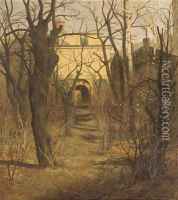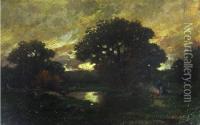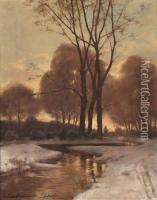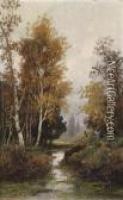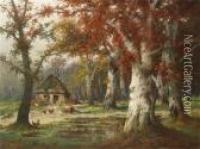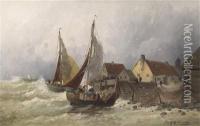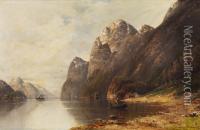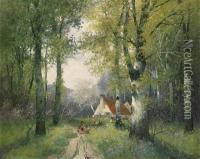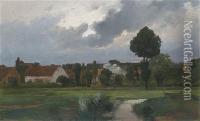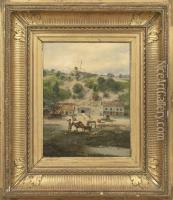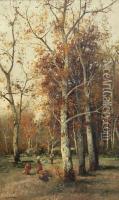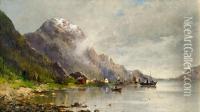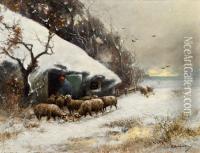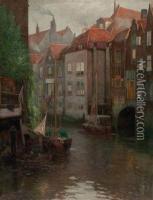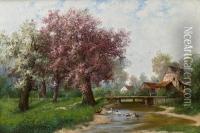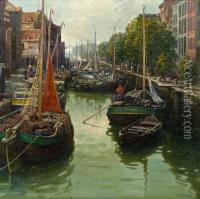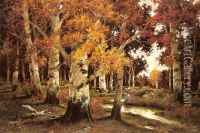Adolf Kaufmann Paintings
Adolf Kaufmann was an Austrian landscape painter born on October 15, 1848, in Troppau, Silesia (currently Opava in the Czech Republic). He was a part of the later period of the Düsseldorf school of painting, which was characterized by its meticulous attention to detail, intense focus on nature, and interest in atmospheric effects.
Kaufmann showed an early inclination towards the arts and pursued his education at the Academy of Fine Arts in Vienna, where he was a pupil of Albert Zimmermann, a well-known landscape painter of that time. Zimmermann's influence is evident in Kaufmann's work, particularly in his handling of light and composition.
After his studies, Kaufmann embarked on a period of extensive travel, which greatly influenced his artistic development. He lived and worked in various cities including Düsseldorf, Munich, Berlin, and Paris. His travels also took him to the Netherlands and to the North Sea coast, where he painted marine subjects. Kaufmann's works often depict the picturesque landscapes of these regions, capturing the moods of nature through different seasons and times of day.
Kaufmann's style is characterized by a romantic sentiment combined with a realistic rendering of nature. His landscapes are typically serene and imbued with a sense of tranquility, often featuring forests, rivers, and rural scenes. He was skilled in the use of both oil and watercolor, and his paintings are noted for their detailed finish and subtle coloration.
During his career, Adolf Kaufmann participated in numerous exhibitions and gained considerable recognition for his work. His paintings were well-received by the public and critics alike, and he became a member of several art associations.
Kaufmann's artistic output was prolific, and his works can be found in many private and public collections, including museums and galleries throughout Europe. Despite his success, he remained relatively modest and dedicated to his craft until his death on February 11, 1916, in Vienna. His legacy continues to be appreciated by art lovers and collectors, and he is remembered as a significant figure in the landscape painting genre of the late 19th and early 20th centuries.
